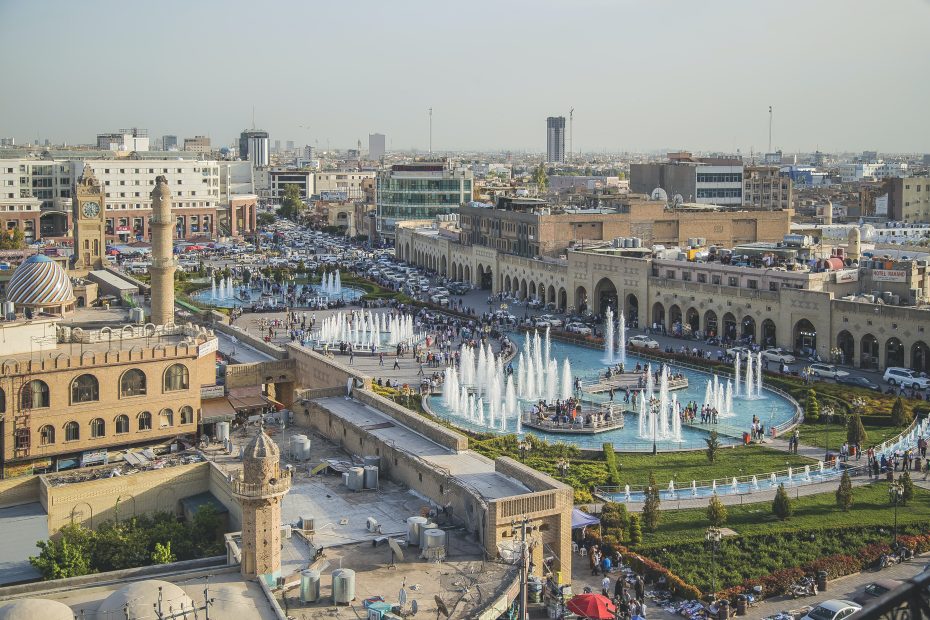The Kurdistan Region of Iraq is a fascinating place full of history, culture, and natural beauty just waiting to be explored. Nestled between Turkey, Iran, Syria and the rest of Iraq, this autonomous region has developed into a popular tourist destination in recent years. Most visitors flock to the capital Erbil, but the second city of Sulaymaniyah also holds many treasures. This article unveils some of the top attractions and hidden gems in each city and their surrounding areas.
First up is Erbil, the bustling capital and largest city in Iraqi Kurdistan. With a history dating back over 6,000 years, Erbil hums with a cosmopolitan energy while still retaining its ancient roots. The highlight is the Erbil Citadel, a UNESCO World Heritage site and one of the oldest continuously inhabited settlements in the world. This enormous mound rises dramatically over the city, crowned by the magnificently restored Ottoman-era walls and winding lanes dotted with historic houses. For a taste of local life, dive into the narrow alleys of the labyrinthine Textile Souq at the citadel’s base.
Erbil’s Ainkawa district is home to several churches and monasteries such as the Chaldean Cathedral, indicating historic Christian communities. The contemporary side of the city comes alive in the Family Fun Park, with its rides, games and picnic spots. When hunger strikes, join the locals at one of Erbil’s many kebab houses serving succulent meat skewers and flame-grilled dishes.
Beyond the city, day trips extend to the spellbinding archaeological site of Shanidar Cave, where Neanderthal skeletons were remarkably found during the 20th century. Nearby is the dramatically beautiful Rawanduz Gorge, carved through the mountains by the Great Zab River. Hire a local guide and marvel at the lush riverside scenery on a hike through the gorge, or enjoy heart-pumping whitewater rafting along the churning rapids.
Heading east is Sulaymaniyah, surrounded by rolling green mountains and second only to Erbil in size. The city exudes a more relaxed ambiance with abundant parks, museums and attractions. The stunning Grand Mosque dominates the skyline, while the prominent Azadi Park draws families with its amusement rides, lakeside setting and mini zoo.
For a sobering look into the brutalities suffered by the Kurdish people, the Amna Suraka Museum documents the atrocities perpetrated by Saddam Hussein. Exhibits recount the genocidal Al-Anfal Campaign against the Kurds in harrowing detail, while the prison halls underground evoke the torture endured by inmates.
Nearby side trips transport you to even more poignant sites. The moving Halabja Memorial commemorates the 1988 chemical attack against the Kurdish town of Halabja, where an estimated 5,000 civilians perished. Those seeking natural wonders can venture east to the dramatic Ahmed Awa Waterfall, hidden high up in the Zagros Mountains and best reached via a scenic but steep hiking trail.
With welcoming hospitality and ample sights, Erbil, Sulaymaniyah and their surrounds offer much to keep visitors engaged. From ancient bastions to bustling bazaars, haunting history to rugged mountain hikes, Kurdistan promises to enlighten and enthral. When seeking a Middle Eastern getaway beyond the classic destinations, this once overlooked region shines as an up-and-coming gem waiting to be unveiled.
Conclusion
Kurdistan’s two largest cities, Erbil and Sulaymaniyah, provide a perfect base to uncover the region’s wealth of attractions. Historical treasures like Erbil Citadel and Amna Suraka Museum reveal Kurdistan’s deep roots and tumultuous past, while scenic sites like Rawanduz Gorge and Ahmed Awa Waterfall showcase the breathtaking natural landscapes. With so much to offer culturally and geographically, Kurdistan is truly a hidden gem for intrepid travelers seeking unique destinations off the beaten path.
FAQs
What is the climate like in Kurdistan?
The climate of Kurdistan is generally hot and dry in summer, and cold and wet in winter. Summers are very hot with temperatures sometimes exceeding 40°C. Winters are cool to cold with temperatures from 5-10°C and high levels of rainfall. The best time to visit is in spring (March to May) or autumn (September to November).
What language do people speak in Kurdistan?
Kurdish is the official language of the Kurdistan Region. Two main dialects are spoken – Kurmanji in the north and Sorani in the south. Most Kurds also speak conversational Arabic. English is spoken by some people in cities and tourist sites.
What is the local currency used in the Kurdistan Region?
The official currency used is the Iraqi dinar (IQD). However, US dollars are widely accepted and preferred by most businesses, hotels and stores, especially in major cities. ATMs dispense Iraqi dinars.
What is the food like in Kurdistan? What are some dishes to try?
Kurdish cuisine is hearty, meat-centric fare. Typical dishes include kebabs, grilled meats, and rich stews served over rice. Recommended foods to try are tashreeb (a thick lamb stew), kofta (spiced meatballs), and naan bread. Local markets have an array of fruits, vegetables and cheeses.
How do I get around Kurdistan without a car?
Public transport options like buses, shared taxis and private hire taxis are available for getting between major cities and sites. In cities, taxis, local buses and shared minivans can be used. Tour companies also offer guided group tours and private drivers. Most major sites are accessible using public transport or tours.
